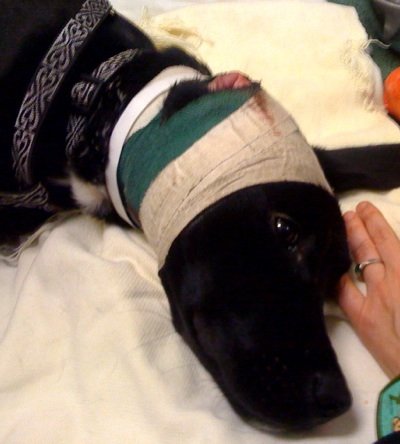This article courtesy of Patty Khuly, VMD, MBA, PetMD.com.
The waiting room in any animal hospital can feel like a cold, lonely place when you’re waiting with a sick pet. It’s worse still when it’s a) so early in the a.m. the doctors have yet to arrive; b) it’s an unknown hospital and you have no appointment; and c) you’ve already called your credit card company to get that almighty “available credit” figure … and it’s a paltry $144.
Yeah, you’re pretty much screwed. In fact, you’re so acutely aware of this that you’re having a hard time keeping it together. Never have you ever felt so incapable of playing the role of the responsible pet owner.
But there is a silver lining of sorts, if you’ll allow yourself to go there. Because the truth is that most pet owners can think back to a time when they didn’t have the funds they should have had to qualify as “responsible.” So finding a kind soul to commiserate with isn’t as hard as you might think.
Unfortunately, what you need now is a friend with the willingness and ability to help you financially; a tough sell in any economy — much less the current one.
This is why the veterinary hospital is always the go-to entity for this kind of problem. Make your appeal to the office manager or veterinarian, and if you have a pre-existing relationship you can typically expect to be met part-way. But if you’re a total unknown to the staff (think e-clinic or recent move), you’re unlikely to be helped in any way beyond a few simple breaks on the bill.
Which makes sense, since someone’s got to pay for the drugs, the supplies, the equipment, the electricity, the phones, and the staff. It all adds up. So what about when you can’t pay and the service is still rendered? Well … someone else always does pay. Nothing in life is free, as they say.
Scenarios like yours are hard on veterinarians and vet staff. We’re hardwired for animal giving. And yet we’re constantly faced with humans who cannot pay for their animals’ care. To compensate for this daily stress, we either steel ourselves against it with hard-line policies, or offer the typical discounts, payment plans, etc. when we can.
Unfortunately, the detritus of this latter option always emerges — especially at this time of year. Eventually, we have to check our books for the write-offs (i.e., those whose payment is so past due it’s no longer expected) and add up all those unpaid balances. Stiffed again, we sniff, as we tick off yet another name.
It’s enough to make you feel taken advantage of. I mean, no one expects not to pay every last penny for their fast food. “So why, oh why,” veterinarians cry, “does it go so differently for us? Do they not value our work?”
I’m sure you’ll agree that the life of a pet is nothing compared to what barely passes for food these days in America. A McMeal is a luxury compared to the need for life-saving care veterinarians are often called on to provide free of charge.
I see both sides. Really, I do. So I comprehend how it is that firm policies mandating pre-payment exist, especially at one-time-only facilities like e-clinics and specialty hospitals. Without them, their books would be riddled with high-priced non-payments much more significant than I see at my general practice. If they took in even one non-paying patient a day, their year-end calculations would show them why they couldn’t afford any new equipment purchases. (And the “needies” come faster and more furiously than a mere one-a-day, I promise you.)
But most clients don’t seem to get it. They see a young woman sobbing in the lobby, unable to pay for her cat’s needed care, and turn fiercely on the veterinary staff. “How could you not treat this animal?” they’ll demand.
Now, if we’re talking immediate care to alleviate suffering, that’s another story. We are obligated to render enough of our services to achieve that much. But that’s not usually what people want. They want definitive treatment, and, as I explained before, someone’s going to have to pay … one way or another.
So it is that everyone present — owner, angry bystander, vet staff and veterinarian alike — are all on the hook for the crime of non-treatment. No one, besides the owner, is any more responsible for seeing that this animal’s care gets paid for than any other.
So it was that an exchange between three women in a holiday-packed hospital lobby last week was so interesting to me (I heard of it second hand). One — in angry tones — accused the hospital of failing to render needed help to the poor woman whose cat had been vomiting for two weeks (for the record, it was not my hospital).
“How can you sit there and let this cat suffer?” she yelled at a trio of cowed reception staff.
Which was when another bystander asked the incensed woman, “If you’re so upset about it, why don’t you stop screaming and put down your credit card?”
This article originally found here at PetMD.com.









